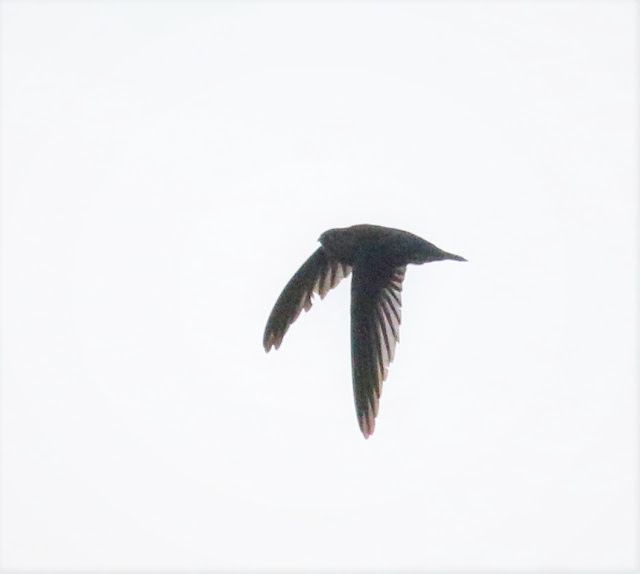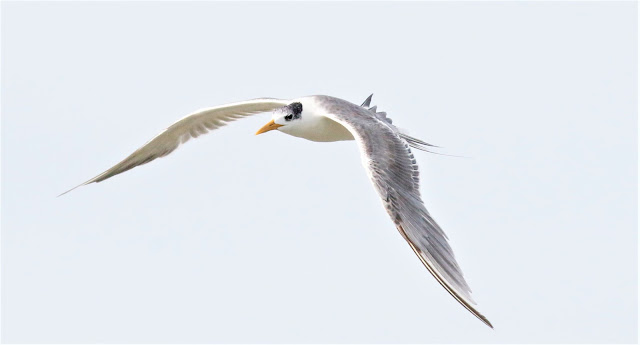Yup ! there were more strawberries than birds in Cameron Highlands but unlike those i have tried in lower land, these ones tasted really sweet.
It has been 22 years ago since i last set foot in this tourist land. Nothing much has change except that more hillsides were turned into agriculture lands. I stayed near the town called Brinchang which is just 9 km from Tanah Rata. Contrary to what most people have said the place is still cold especially during the night and in the early hours of the morning. The temperature then was between 16 -17 degrees.
While most people were comfortably tug inside their warm bed covers, i did what most birders would do i.e sneaking out in the early morning for birding activities. Weather was cloudy throughout the day and it rained almost every day in the evenings. Birding was done just along the road sides - recall the roadsides along Perdik or the old Gombak Road albeit with much more traffic. I could also hear the calls of Grey-throated Babbler, Stripped-throated Bulbul and Mountain Bulbul from inside this forest patch.
The first bird which i encountered and in numerous numbers were the House Swift (Apus Afinis).
Despite their substantial numbers it was never easy to photograph them.
Only two species of swiftlets were seen during my stay. The second one as shown above was probably a Black-Nest Swiflet. It was much larger than Apus afinis but their numbers were fewer.
The next bird seen was a raptor !
If your eyes are better than mine, you could probably see some noticeable field markings which will point it to a Black Eagle. The first feature is the paddle-shape wings and the second one to look for is its yellow legs. Unlike other raptors which often thermal high above the sky, this eagle prefers to hunt while circling silently just above the tree tops.
The photos were taken from quite a distance and the size of this raptor is almost as huge as an Aquila.
The song uttered by this Oriental Magpie Robin was very much different than its cousins in lower land.
If you are a non-birder, you would probably won't include this myna picture. There were only two official records of its sighting in e-bird (as at this point of time) in this location. Although there are probably more unrecorded sightings of this Javan Myna over here but the more significant thing about this myna was that it has spread towards the east coast ! Although there were plenty of Common Myna (Acridotheres tristis) around here but this Javan Myna was the only one seen.
There were also a number of Pacific Swallow seen here. Here you could see Mommy had just arrived with possibly some early morning snacks.
As the sun light slips through the moody sky, things were a bit more brighter and nicer.
I have waited and waited but yet no butterflies came. So i decided to soaked into the beauty of mother nature.
I believe there was a nest inside this pine tree but i certainly do not carry any scissors or knife unlike some unscrupulous photographers to see what was this Everett White-Eye up to.
This White-Rumped Munia was seen leaving from its nest and its nestlings can be clearly heard calling from inside the nest.
Streaked Spiderhunter - the only spiderhunter which is very common in the highlands.
Did you just mentioned my name?
Enter the Dragon !
 |
| Robinson's Angle-Head Lizard |
This was only the second time in my life to have encounter this lizard.
A gravity defying stunt, clap ! clap !
Upon seeing me, this squirrel tried its level best to slowly inch its way up the tree trunk by keeping its head as low and parallel as possible with the tree trunk. Well i have pretended not to have seen you as well.
One of the most difficult bird to photograph in my opinion (IMO) was this Fire-Breasted Flowerpecker.
Despite its continuous presence, i just could not get a clean shot.
While looking for a best shot of the above Fire-breasted flowerpecker, in came this bird (below) which i initially thought it was a flycatcher .
then i thought that this could be a female Fire-Breasted Flowerpecker. Ah ! wrong again !
Field Guides described a female (Fire-breasted Flowerpecker) as having greenish-olive upperparts. This one doesn't ! So i believe it was just a juvenile male.
Although most of the birds seen were common but it was still an exciting trip through out. To wrap things up, here are some parting gifts for all of you !
There were probably enough roses for all the damsels in this town as well as the entire country.
HAPPY BIRDING !


































































